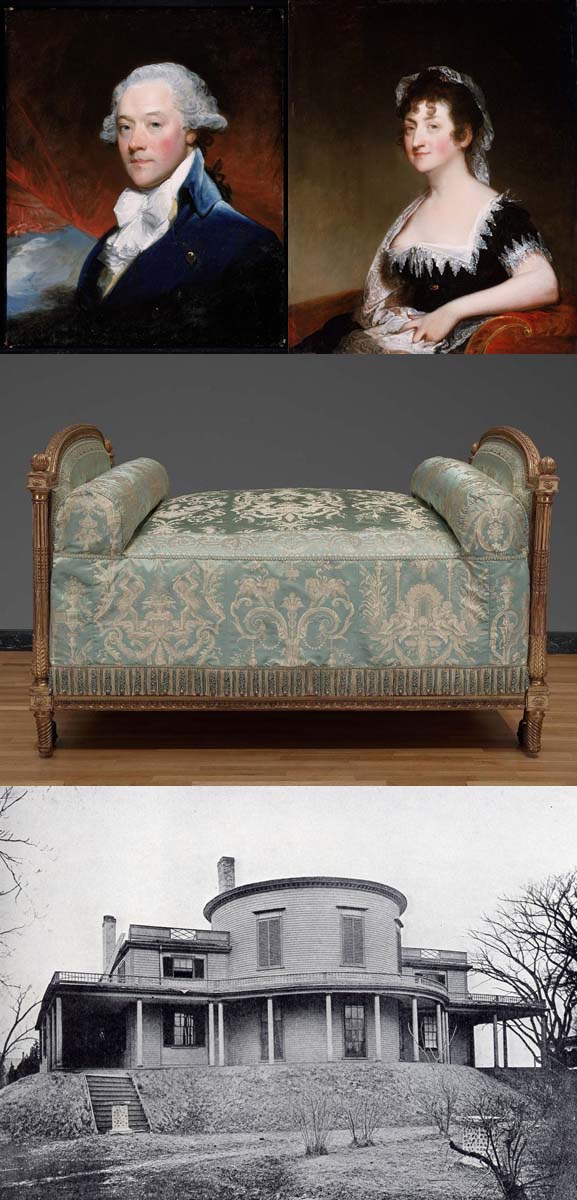Dorchester Illustration no. 2461 Colonel James Swan
Thinking about Bunker Hill Day anniversary on June 17th
Some veterans, who lived in Dorchester or had a Dorchester connection, moved here after their service.
Colonel James Swan was a native of Scotland, who came to Boston in his boyhood. He was joined the Sons of Liberty and participated in the Tea Party in 1773. He fought at Bunker Hill, where he was wounded twice. He was Secretary of the Board of War for Massachusetts in 1777 and afterward adjutant-general of the state.
During the time he held that office, he drew heavily on his private funds to aid the Continental Army, which was then in dire need of funds to arm and equip the soldiers who were arriving in Boston from all parts of New England. After the Revolution, Swan privately assumed the entire United States French debts at a slightly higher interest rate. Swan then resold these debts at a profit on domestic U.S. markets. The United States no longer owed money to foreign governments, although it continued to owe money to private investors both in the United States and in Europe. This allowed the young United States to place itself on a sound financial footing.
His wife, Hepzibah Swan, was wealthy in her own right and was accomplished in both society and business. She and Sarah Morton started the Sans Souci Club in Boston. Mrs. Swan bought out two of the original investors in the largest and most far reaching real estate venture in postwar Boston when she became the only female member of the four person Mount Vernon Proprietors. They acquired the John Singleton Copley pasture in 1794 and subdivided it into townhouse lots that became quite valuable when the Massachusetts State House opened in 1798.
In 1796 the Swans built a second home on Dudley Street in Dorchester across from where The Salvation Army Ray and Joan Kroc Corps Community Center is located today. Hepzibah wanted a larger home for entertaining so she had this one built in Dorchester with the help of her friend, Charles Bullfinch the noted architect. In this very grand manor house she maintained a lively ménage of herself, General Henry Jackson and other friends including General Henry Knox.
During the siege of Boston in the 1770’s, Knox and Jackson had stayed with her family and kept them safe from the British occupiers. Madam Swan kept their friendship for the rest of their lives. She depended on General Jackson for the management of her household affairs. Jackson maintained a home in Boston to keep up an appearance of propriety but lived in Dorchester. When he died in 1809, Hepzibah had him entombed in her garden in a plot surrounded by lilacs. A lane of lilacs led from the house to the tomb that Mrs. Swan often visited and pointed out to guests. One of them was the Marquis de Fafayette in 1825, on his triumphal visit to Boston for the 50th anniversary of the Battle of Bunker Hill. He visited Mrs. Swan on his way to Quincy to see John Adams. The Marquis and Mrs. Swan spoke in French for over an hour and no doubt Mrs. Swan walked him out to look at the tomb of Revolutionary War General Henry Jackson. At her death in 1825 Madam Swan joined Jackson in the tomb.
Merchant James Swan arrived in France in 1787 where he hoped to trade in American produce such as wheat, tobacco and naval supplies. The destruction of social order following the French Revolution placed a premium upon these goods, and Swan’s business prospered. In 1792 the French government declared all property of the crown, church and fleeing aristocrats to be public property. That property was subsequently sold in negotiated sales or at auction. Swan bought numerous lots. Many of these he sold, but the best he shipped back to America, including the Thierry bedchamber suite, where they were installed in the Dorchester (Boston) home where his wife and daughters lived. These pieces of furniture from the master bedroom of Marie-Antoine Thierry Ville d’Avray’s estate are on display at the Museum of Fine Arts, Boston, courtesy of the descendants of the Swans.
In 1808 Swan and a business partner had a falling out, and the partner alleged that Swan owed him a large amount of money. Swan refused to pay and was sentenced to debtors prison in France. Swan lived stylishly in prison until 1830 when he was freed by another revolution.
Portraits are by Gilbert Stuart. The bed is at the Museum of Fine Arts, Boston. The photograph of the house was published in Domestic Architecture of the American Colonies and of the Early Republic by Fiske Kimball. (New York: Charles Scribner’s Sons, 1922).

